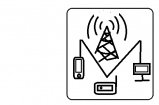JNI Callback Tutorial for Android: Implementing Native Functionality in Java
In this video, we’ll show you how to use JNI callbacks to implement native functionality in your Android app. We’ll cover the process of creating a JNI interface and using it to call C++ functions from Java. You’ll learn about the different components involved and how to set up your development environment to get started. By the end of this video, you’ll have a better understanding of how JNI callbacks can help you to enhance the performance of your Android app.
The Android Java Native Interface (JNI) is a mechanism that allows Java code running in the Java Virtual Machine (JVM) to call and be called by native code (code written in C/C++). This is useful when an application needs to access functionality that is not provided by the Java standard library or Android SDK, or when performance issues require that certain computations be offloaded to native code.
To use JNI, you typically create a Java class with native methods, which are methods that are implemented in native code. The native code is then compiled and packaged with the Java code in the form of a shared library, which is loaded at runtime by the JVM.
JNI uses a set of functions and data types that are defined in the jni.h header file, which is provided by the Android NDK (Native Development Kit). To use JNI, you need to include this header file in your native code and link against the jnigraphics library.
JNI allows for communication between Java and native code, such as passing data back and forth between the two languages, calling methods in the Java code from native code and vice versa.
It is important to note that JNI is not the only way to implement native functionality in android, but it is the most common one. Other solutions are the use of C++ libraries via the Android NDK and the use of Android’s NativeActivity class.
Views :7
android studio




